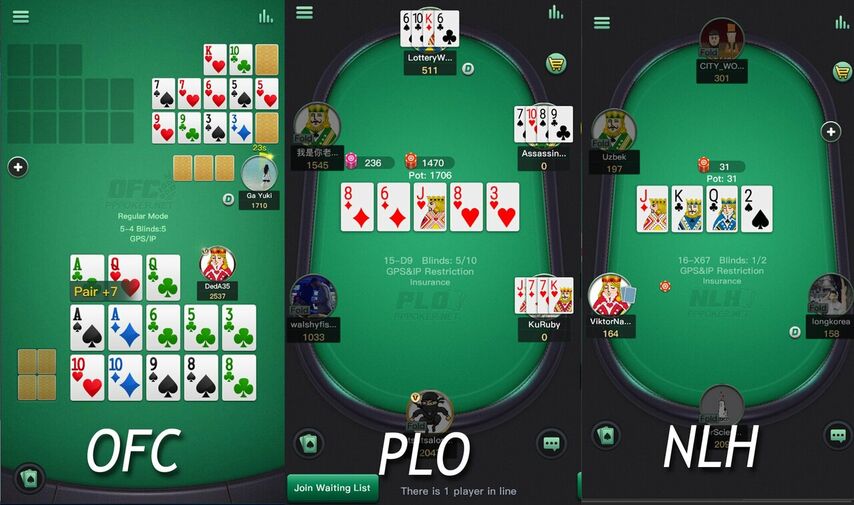There are so many ways to handle your hole cards in poker. A beautiful aspect of the game is the cunning and creative strategies players implement. Even though there are endless possibilities for each hand, there are optimal ways to play. Most successful poker players incorporate aspects of GTO into their game and it has completely changed modern poker.
So what is GTO poker? If you’ve spent any time watching poker videos or chatting with players, you might have heard about something called “game theory optimal”. GTO is the idea that somewhere among the different bet sizes and actions players have available to them, there lies a perfect way to play. Using this style of poker successfully should make opponents unable to exploit you, meaning they won’t be able to profit against you.
It’s a far cry from the early days of Texas hold ‘em poker when a re-raise always meant a player had pocket kings and a 4-bet was pocket aces without a doubt.
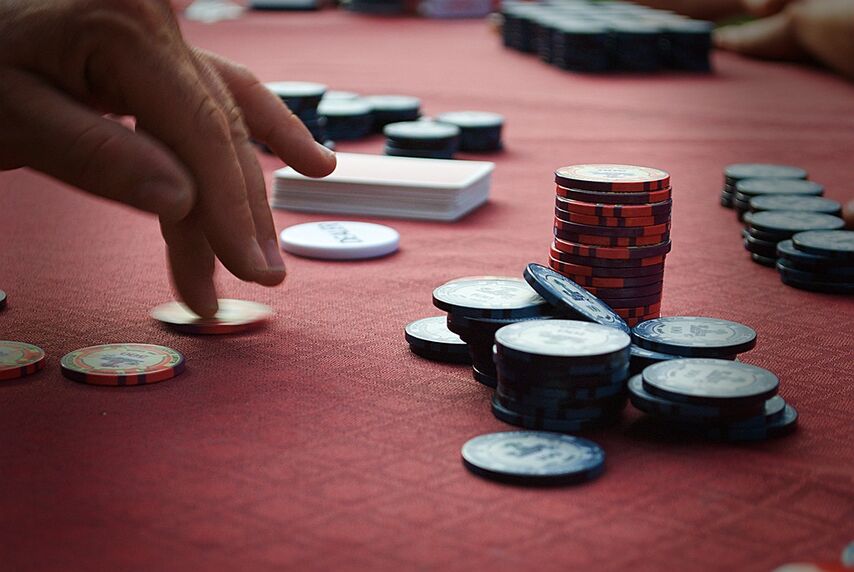
When Did GTO Poker Start Being Used?
Even before terms like GTO poker were being used, players were pursuing something called Nash equilibrium (named after Princeton mathematician John Nash). This term is another way to describe an optimal strategy where no player can win against you in the long run.
It’s tough to give credit to a single individual, but mathematician John von Neumann is commonly referred to as the founder of game theory. In 1928, he proved that zero-sum games with actions that players could view have optimal ways to maximize wins. The idea was that probability alone couldn’t produce an optimal strategy, so Neumann had to mathematically include the concept of deception.
What Are Frequencies in Poker?
When first learning poker, it’s easy to get wrapped up in absolute decisions. It can feel like decisions are very limited and we often don’t take the full range of possibilities into account. Playing simple poker makes you easy to play against, so having frequencies is the solution.
Frequencies in poker show how often we make actions like folding, checking, calling, and raising.
Playing from a late position, you look down at your cards and see a strong hand: a pair of tens. Before it’s your turn, one of the other players makes a raise. To a novice, the choices are simple in this situation; either call the bet or raise. Experience players have a frequency of calling and raising in this scenario, so it’s not a simple 50-50 decision. The GTO strategy will have an optimal % of the time to call and raise.
GTO vs Exploitative – Two Different Poker Styles To Use
We’ve explained that playing with a GTO approach makes it difficult for opponents to profit from you, but what if they are making mistakes? There are situations where GTO will not be the most profitable, due to factors that can’t be inputted into the software.
Let’s say you’re across the table from a hyper-aggressive player. There will be situations where you should exploit that tendency, rather than take a GTO approach. This is called exploitative play: meaning a deviation from GTO based on external factors (to create higher profit).
What is a GTO Solver Program?
GTO solvers are like powerful calculators that have been fine-tuned for poker. You can input details from the hands you’ve played to find the correct strategy or experiment with situations you might see in the future.
Two of the most well-known solvers are PioSOLVER and Simple Postflop (shown below).
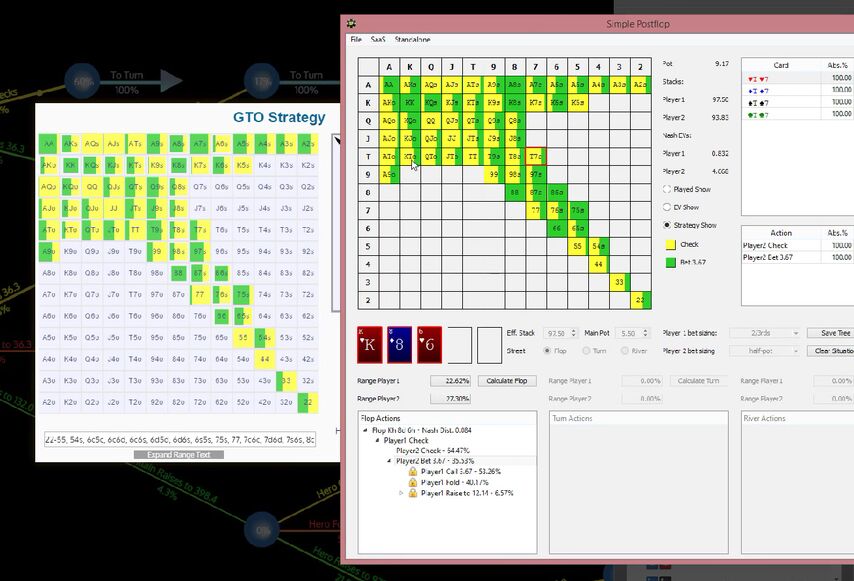
You might want to practice common scenarios to maximize your profits. When you miss the flop with ace-king, how often should you make a continuation bet?
When solvers first hit the poker world, they weren’t getting widespread use. These days, poker solvers are an essential tool in a winning player’s arsenal. For different games, like Texas hold ‘em and Omaha, a different solver is required.
GTO Solvers are Great for Showing:
- The optimal actions for any poker scenario you can imagine.
- The optimal actions you should have taken during your past hands.
- Finding flaws in your approaches to the game of poker.
Using a Balanced GTO Strategy Pre-Flop
You can start using a GTO strategy as soon as you have seen your hole cards. There are pre-flop ranges that show you which hands to play from each table position. For example, it’s better to raise with a wider range of hands from a later position, and GTO ranges will show you precisely which ones to select. If you’re facing a raise, the strategy needs to be adjusted.
Balance is vital for GTO approaches to work correctly. If you are unbalanced, your opponents will be able to predict which hands you have in certain scenarios. Being balanced makes it harder to exploit you.
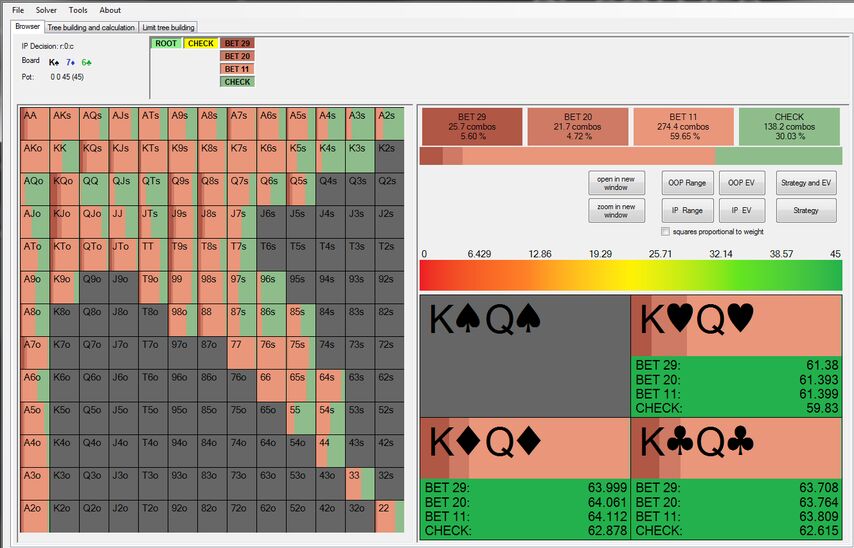
So how can you play balance poker pre-flop? Instead of only raising with strong hands (as your opponents would expect), mixing in other moderate-strength hands can make you more balanced.
Where Do These GTO Strategies Come From?
Even if the GTO solver is showing something counterintuitive, all of the actions are based on logic and mathematical equations. The solver uses the same data that humans account for, with perfect math. It will use pot odds, implied odds, reverse implied odds, and other metrics to craft a perfect long-term strategy.
Playing GTO doesn’t shield a poker player from short-term variance. Kings will sometimes beat aces and everyone has bad beats, but a GTO strategy wins in the long run. It’s not about individual hands or short-term results.
Does This Mean That Poker is Fully Solved?
For the foreseeable future, poker falls into a class of “imperfect” games, but that’s not referring to the quality of the game. An imperfect-information game is one that’s affected by past events, which makes it far more difficult to solve. Perfect-information games, like checkers or Connect Four, have been solved.
Even though poker hasn’t been fully solved yet, it’s best to be ahead of the curve with poker tools. It’s becoming easier than ever to use poker software and it’s also becoming widespread. The GipsyTeam Shop is stocked with heads-up displays (HUDs), equity calculators, hand range analysis tools, and more.
If all of the tech talk is a bit overwhelming, click on this GipsyTeam support link to connect with our specialists. We’re here to chat and there is no obligation to buy anything.
Bring Your GTO Approach to These Poker Sites
Armed with a more impenetrable GTO strategy, take on some soft competition at some of our favorite poker sites and clubs.
We have lots of heads-up display packs available for PokerStars, which is also a great site to face recreational players. Try out the new approaches you’re working on at various cash game table limits, from micro to high-stakes. This site has one of the largest player bases in the online poker world, so you’ll find full Texas hold ‘em and Omaha tables (plus several other formats).
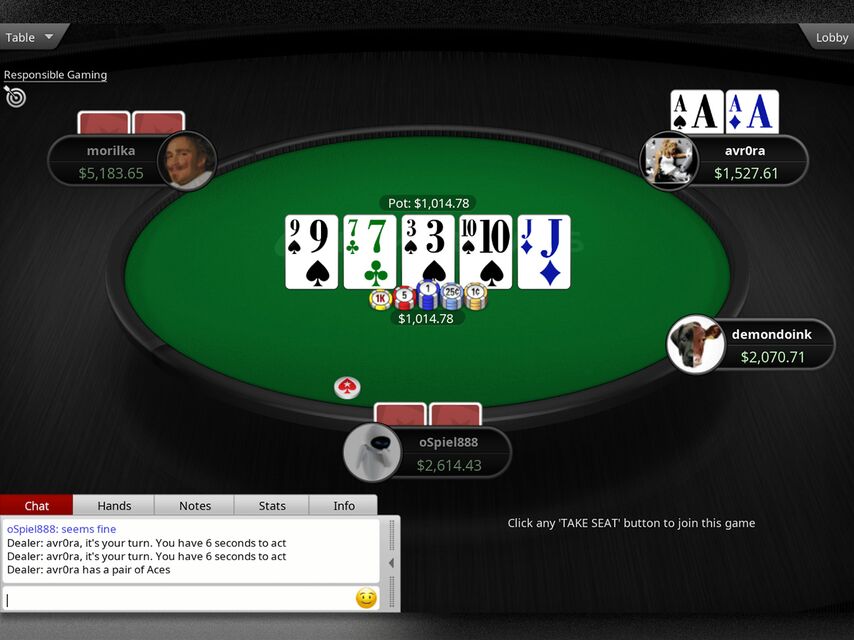
partypoker is a well-known site with a superb line-up of tournaments, like the PowerFest Series with a $60 million GTD. The cash games don’t disappoint either, they’ve got all the popular formats like no-limit hold ‘em, pot-limit hold ‘em, and short deck. Stakes start at $0.01/$0.02 and go all the way to $200/$400.
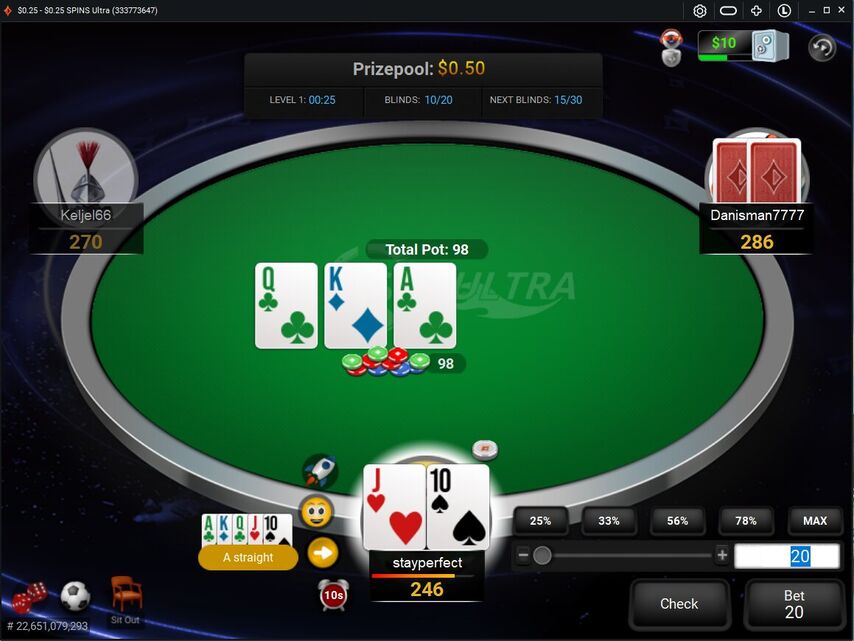
GGPoker has great games and fantastic player traffic. Being one of the biggest sites, they’ve attracted a largely-recreational player base, which you can use to your advantage. After you take advantage of their welcome bonuses, head to the hold ‘em or Omaha cash game tables, or enter WSOP satellites and events.
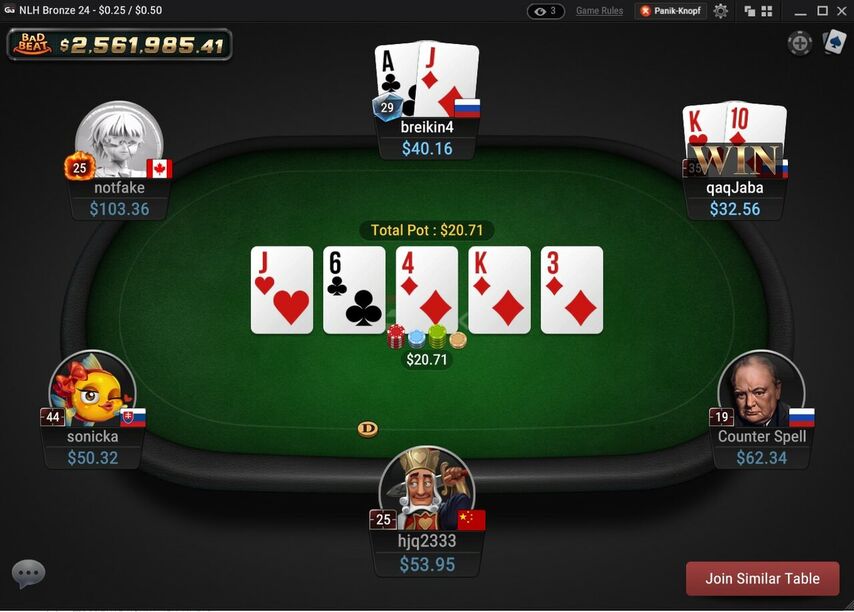
Mobile poker apps are a great way to be selective about the players at your tables, most of whom are fairly casual. Instead of playing hold ‘em and Omaha with an entire player pool, you’ll be able to join clubs and organizations (or create your own). Some poker club apps have emulators for PC play, but you can still multi-table on a tablet or smartphone. They can be downloaded anywhere around the world.
Mobile Apps We Recommend:
